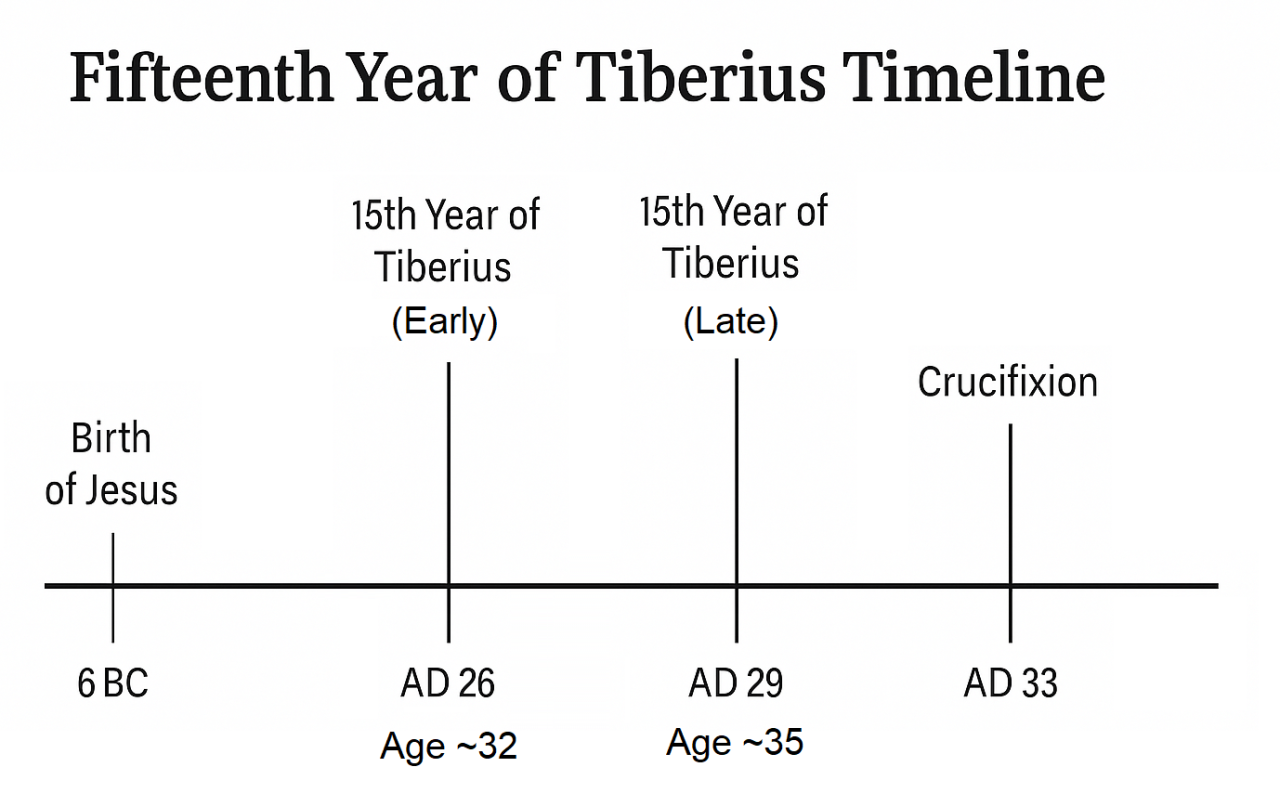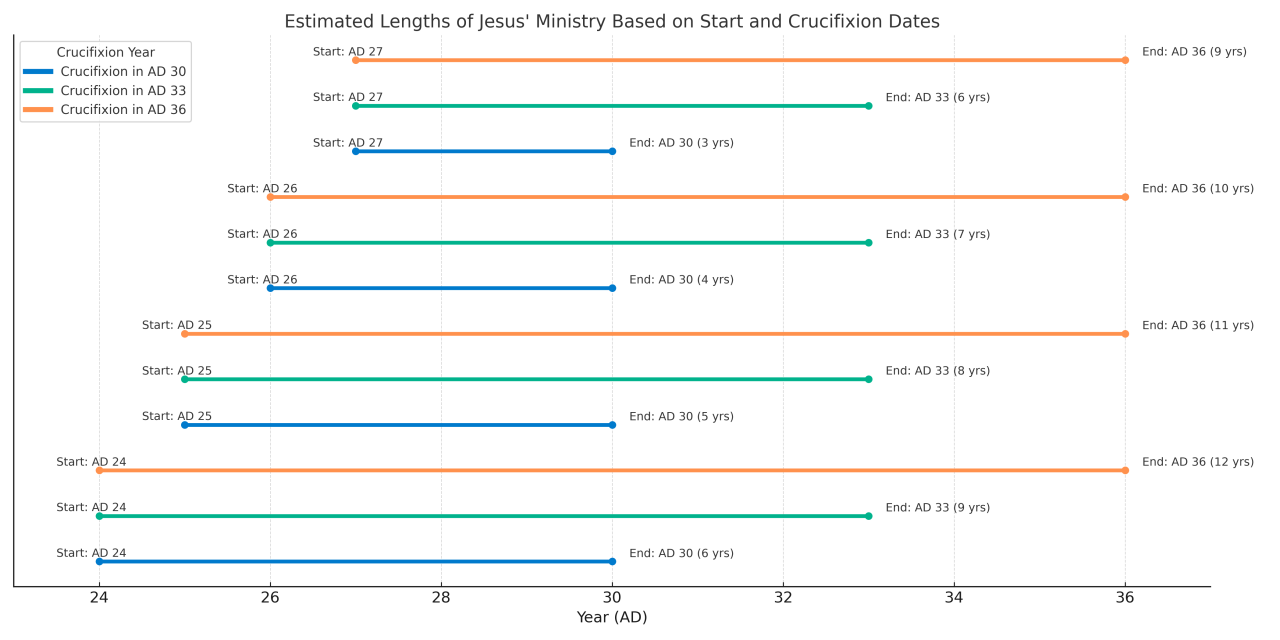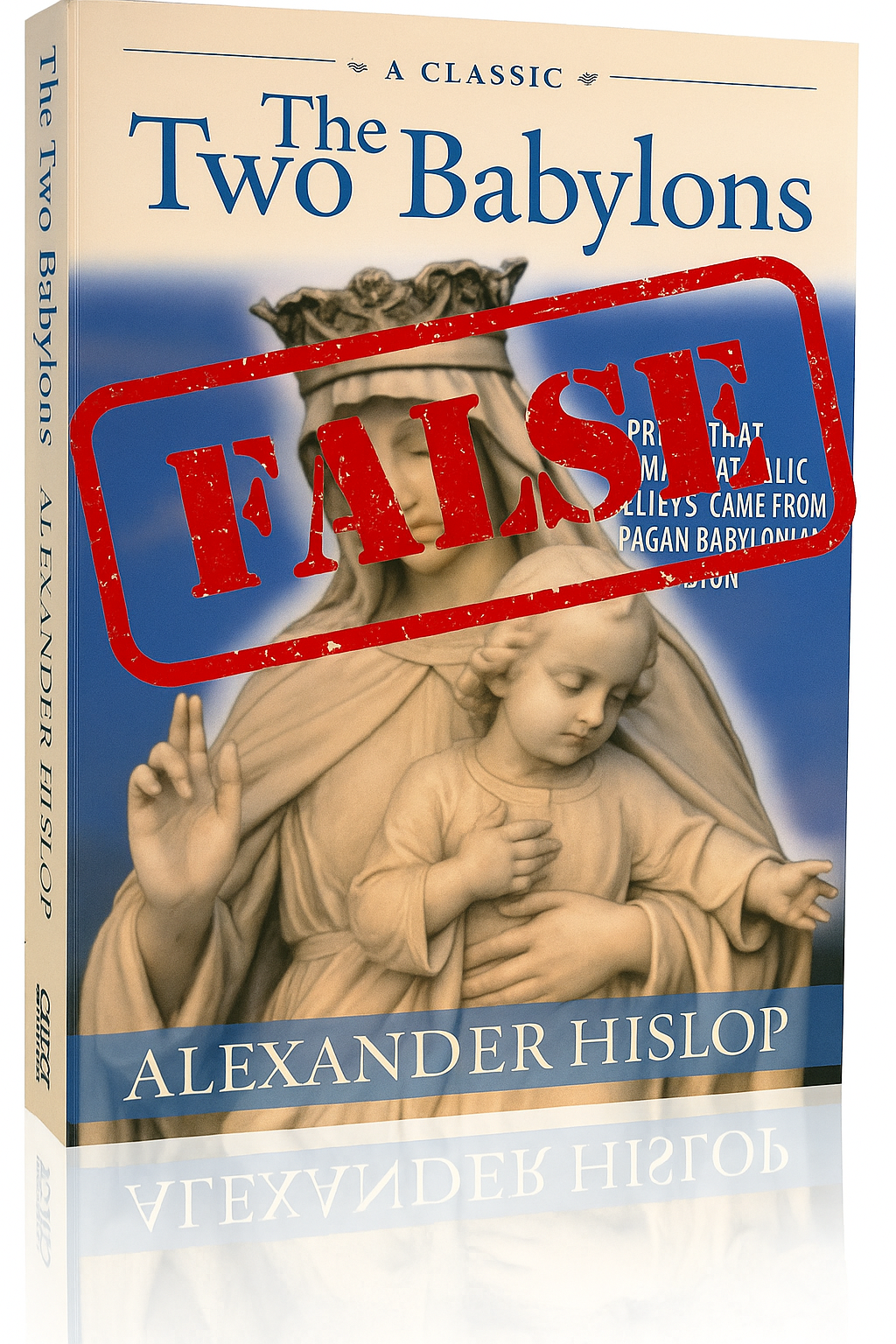How Old Was Jesus When He Died? A Fresh Look At The Historical Clues

We often hear that Jesus was “about 33 years old” when he was crucified and only had a three-year ministry. But have you ever wondered how precise that number is, or why we assume that was his age, especially when Scripture doesn’t specify?
Table of Contents
- The Gospel of Luke: “About Thirty”
- Early Church Testimony: Irenaeus and the Longer Ministry
- Historical Anchors: Birth, Pilate, and the Crucifixion Window
- The Death of Herod
- Cross-referencing with Pilate, Caiaphas, and Jesus
- When Did Tiberius Begin to Reign?
- Astronomy and the Timing of Passover
- Estimated Lengths of Jesus’ Ministry
- Why This Matters
- In Summary
I’ve long wondered about this, especially when the Pharisees accused Jesus of not being close to fifty, which seems odd if he was only in his early 30s. Then I later discovered Irenaeus also had similar thoughts in the second century, and the plot thickened! I’ve had this rumbling around in the back of my mind for a few years now and slowly chewed it over. So now I’m going to try and present the evidence, rather than rely solely on tradition and assumptions, and piece together what the Gospels, early Church Fathers, historical data, and even astronomy can tell us about the potential age of Jesus and the length of his ministry.
What follows is a deeper, richer look at the life and death of Jesus and what we can learn by following the evidence.
The Gospel of Luke: “About Thirty”
Luke 3:23 tells us plainly:
Jesus was about thirty years old when he began his work.
This statement has historically been the anchor point for dating Jesus’ ministry. Most take this to mean he was around 30 at his baptism, which marked the beginning of his public ministry. Something to bear in mind here is that Luke isn’t exact and only says “about thirty”, so he could have been slightly younger or older at the time. But being around the age of 30 would align with the requirements of priests, which Jesus was also fulfilling the role of (Hebrews 2:17; Numbers 4:1–4; Numbers 8:23–25).
But from there, it’s traditionally assumed that Jesus ministered for just three years before his death, mainly based on the Gospel of John, which mentions three Passovers (John 2:13, 6:4, 11:55).
However, John also says at the end of his Gospel in John 21:25:
But there are also many other things that Jesus did; if every one of them were written down, I suppose that the world itself could not contain the books that would be written.
This is a clear reminder, even if John is being hyperbolic here: not everything was recorded. Considering that the Synoptic Gospels only mention one Passover, the number of Passovers we read about in John may not reflect the total number Jesus experienced during his ministry. They may also serve a theological point (three being a prominent number in Scripture) rather than a chronological one.
Early Church Testimony: Irenaeus and the Longer Ministry
In the second century, Irenaeus, bishop of Lyon and disciple of Polycarp (who had also known the Apostle John and was likely his disciple), made an interesting claim about the age of Jesus — and backed it up by saying it was verified by the Apostle John himself!
In Against Heresies (2.22.4–6), Irenaeus wrote:
…our Lord possessed [old age] while He still fulfilled the office of a Teacher, even as the Gospel and all the elders testify, those who were conversant in Asia with John, the disciple of the Lord, [affirming] that John conveyed to them that information. … Some of them, moreover, saw not only John but the other apostles also, and heard the same account from them, and bear testimony to this statement.
He argued that the line in John 8:57:
Then the Jews said to him, ‘You are not yet fifty years old, and have you seen Abraham?’
…would only make sense if Jesus were already in his forties (or at the very least, close to that age). If Jesus had been just thirty, Irenaeus reasons, they would have said, “You are not yet forty” (Adv. Hae. 2.22.5). Although it’s a minority view in the early church, John Chrysostom also appears to agree with Irenaeus. In the fourth century, commenting on verse 57 in his Homily 55 on the Gospel of John, Chrysostom makes a simple, yet profound, statement:
So that we conclude that Christ was nearly forty.
And just like that, one of the heavyweights of the Patristic period concludes something that many others before him had dismissed or ignored.
Whether you agree or not, this shows that some early Christians believed Jesus lived up to his late-30s/early-40s, which suggests a much longer ministry than the traditional three years as often assumed.
Irenaeus’ reasoning for this is also theologically based on how Christ came to live a complete human experience, and by living longer, he sanctified each stage of life:
He came to fulfill all righteousness, and for this reason did not reject the common human experience, but sanctified every age by His likeness to it. He came as an infant to sanctify infancy, as a child to sanctify childhood, as a youth to sanctify youth, and as an elder to sanctify old age. He therefore passed through every stage of life, so that He might be a perfect teacher for all, not merely in words but in age, sanctifying even the elderly because He reached their state as well. (Against Heresies 2.22.6)
Historical Anchors: Birth, Pilate, and the Crucifixion Window
Now that we’ve examined Scripture and some of its early commentators, let's investigate further to see if this more extended age holds up to scrutiny.
Here are some key historical facts we can use to frame Jesus’ timeline:
- Jesus was born before 4 BC, as Herod the Great died that year.
- Caiaphas was appointed high priest by Roman governor Valerius Gratus (predecessor to Pontius Pilate) around 18 AD (Jewish Antiquities 18.2.2 and 18.4.3).
- Pontius Pilate ruled from AD 26 to 36, meaning Jesus had to be crucified within that decade.
- Caiaphas was deposed by Vitellius, the Roman governor of Syria, in 36 or 37 AD.
If Jesus were born in 6 BC, he would have turned 30 in AD 24, and then he would have been about 39 years old at the time of his crucifixion in AD 33. But if he had died in AD 36, he could have been as old as 42.

This makes the traditional age of Jesus being 33 at his death seem more like a minimum estimate than a confirmed fact, and at this point, it appears much less likely than the alternatives.
The Death of Herod
Most scholars conclude that Herod the Great died in early 4 BC, shortly after the March 13 partial lunar eclipse, and shortly before Passover in April 4 BC. A minority of scholars favour a 1 BC date due to another eclipse in January of that year.
The first-century historian Josephus provides several key details which put the emphasis more strongly on the 4 BC date, though:
- Herod died shortly after a lunar eclipse (dated March 13, 4 BC).
- His death occurred before Passover.
Between the eclipse and Passover, several events occurred:
- The execution of his son Antipater.
- A period of illness.
- The gathering of elders to be executed upon his death (though this wasn’t carried out).
- His funeral and burial arrangements.
These events suggest a gap of at least several weeks between the eclipse and Passover. The 4 BC eclipse is most commonly accepted because it better fits the Roman historical context, it aligns with the generally accepted date for the start of the reign of Herod’s sons, who took power soon after his death, and it gives enough time between the eclipse and Passover for the events Josephus described. Herod’s son Archelaus began ruling not long after Herod’s death, and his removal from power by Caesar Augustus occurred in AD 6, after a 10-year rule — supporting a 4 BC start.
This historical evidence is generally why Jesus’ birth is usually placed around 6–4 BC, to allow time for the visit of the Magi, the flight to Egypt, and Herod’s order to kill the infants, which all happened before Herod’s death.
Cross-referencing with Pilate, Caiaphas, and Jesus
- Pontius Pilate governed Judea from 26–36 AD
- Caiaphas was the high priest from 18–36/37 AD
- So the overlapping years of their offices are 26–36 AD
- Jesus’ crucifixion, then, must have occurred between 26 and 36 AD
This is consistent with the traditional scholarly estimates for Jesus’ death: 30 AD or 33 AD are the most likely, especially when coupled with the timing of the Passover in those years.

When Did Tiberius Begin to Reign?
There are two main ways scholars calculate the fifteenth year of Tiberius:
1. From his co-regency with Augustus (AD 11–12)
- Augustus began allowing Tiberius to share imperial authority in the East around AD 11 or 12.
- If Luke used this earlier date, then the 15th year would fall around AD 26–27.
2. From the death of Augustus (AD 14)
- Augustus died in AD 14, and Tiberius became sole emperor.
- The 15th year from this would be AD 28–29.
Depending on whether Luke calculated from the co-regency or the sole rule, determines where the fifteenth year lands on our Gregorian calendars:

How Does This Affect Jesus’ Age and Ministry Start?
If Jesus was born in 6 BC (the most likely date), and what year the 15th year of Tiberius was, then Jesus could have been anywhere between 32 and 35 at his baptism.

Luke 3:23 says Jesus was “about 30” when he began his ministry. That phrase leaves us some wiggle room for interpretation around his age.
So, if Tiberius’ 15th year is AD 26 and Jesus was born in 6 BC, Jesus would be about 32. But, if Tiberius’ 15th year is AD 29, Jesus would be about 35 at the start of his ministry.

Astronomy and the Timing of Passover
Because Jesus was crucified during Passover, scholars have used astronomical data to identify years when Nisan 14 (Passover Eve) fell on a Friday, the day Jesus is said to have died.
These are the most likely years:

Although the eclipse in AD 33 was only a partial one, it was visible from Jerusalem then. Peter could have been referring to this as the fulfillment of prophecy in Acts 2:20 about the moon turning red.
As to what caused the darkness mentioned in the Gospels during the crucifixion (Matthew 27:45; Mark 15:33; Luke 23:44), no astronomical data can support this fully. However, we have fragments from a Samaritan-born historian called Thallus, who lived and worked in Rome around AD 52. His original works are lost to us, but fragments are preserved in citations from other writers. One such relevant reference is found in a chronology from Julius Africanus, written around AD 221:
Thallus, in the third book of his histories, explains away this darkness as an eclipse of the sun—unreasonably, as it seems to me.
Julius calls the explanation from Thallus "unreasonable" because it would be impossible to have a solar eclipse at the time of year when Passover fell due to the full moon. What this does tell us, however, is that the darkness was well-known to contemporaries of Jesus and that they were attempting to find naturalistic ways to explain it away, and that neither Jesus nor the darkness at his death were ever denied as factual.
Although this detail about the lunar eclipse, and the reference by Thallus, doesn’t prove the date, it helps to show that the details mentioned in the Gospel accounts are based on genuine astronomical and factual events that only eyewitnesses would have known about, which helps to pinpoint the date range of the crucifixion.
Estimated Lengths of Jesus’ Ministry
Below is a timeline showing various possibilities for how long Jesus’ ministry may have lasted, depending on when he began and which year he was crucified.

- Possible start years: AD 24, 25, 26, 27
- Possible crucifixion years: AD 30, 33, 36
- Resulting ministry lengths, ranging from 3 to 12 years
The longer spans, especially 6–9 years, match the possibility that Jesus spent several years teaching, travelling, and revealing God’s Kingdom, not merely three. This could also account for how he built up a large following across Israel and how that became a big issue for the ruling Pharisees as his fame grew.
Why This Matters
In many ways, it doesn’t. Jesus’ death and resurrection are not dependent on whether he was 33 or 40.
But this kind of historical inquiry helps us:
- Appreciate how long Jesus likely spent among the people
- Recognise the careful timing of God’s plan and the time he gave to proclaiming the coming Kingdom
- Demonstrate that Jesus fulfilled some aspect of the Law regarding the age one becomes a priest
- Theologically demonstrates, as Irenaeus said, that Jesus “sanctified” each stage of life, showing he lived the full human experience
- See how Scripture, tradition, and history align to give us a fuller picture, and affirm the historicity of the Gospels
In Summary
- Birth: Between 7–4 BC (likely 6 BC due to when Herod died)
- Ministry begins: Around AD 24–27, aged ~30 at his baptism
- Crucifixion: Most likely AD 33, at age 39–40
- Length of ministry: Likely 6 to 9 years, possibly longer
A lot of this rests on what year we settle on for the birth of Jesus. The traditional age of 33 is certainly possible, but Scripture, Church tradition, historical markers, and astronomy all suggest a more extended ministry and an older Jesus than most assume, which in turn validates Irenaeus’ exegesis and conclusions on the verse in John — which is where we began with all of this. This helps us see that the clues to Jesus’ age were in Scripture all along.
Further Reading
- CHURCH FATHERS: Against Heresies, II.22 (St. Irenaeus)
- CHURCH FATHERS: Homily 55 on the Gospel of John (Chrysostom)
- The Antiquities of the Jews, by Flavius Josephus
- Schürer, Emil, and Vermes, Geza. The History of the Jewish People in the Age of Jesus Christ: Volume 2. United Kingdom, Bloomsbury Publishing, 2014.
- Finegan, Jack. The Handbook of Biblical Chronology. United States, Hendrickson Publishers, 2015.
- Brown, Raymond Edward. The Birth of the Messiah: A Commentary on the Infancy Narratives in the Gospels of Matthew and Luke. United Kingdom, Yale University Press, 1999.
- Maier, Paul. Josephus, the Essential Works: A Condensation of Jewish Antiquities and The Jewish War. N.p., Kregel Academic.
- Martin, Ernest L.. The Star That Astonished the World: “Star of Bethlehem”. United States, Academy for Scriptural Knowledge, 1996.
- Ossuary of the High Priest Caiaphas, 18–36 CE | Center for Online Judaic Studies
- Reconciling Herod’s Death: A Debate Between 4 B.C.E. and 1 B.C.E. Through Biblical and Historical Lenses — Christian Publishing House Blog
- Valerius Gratus° | Encyclopedia.com
- PROCURATORS — JewishEncyclopedia.com
- Lucius Vitellius | Roman general | Britannica
Leave a comment Like Back to Top Seen 1.2K times Liked 3 times
Enjoying this content?
Support my work by becoming a patron on Patreon!
By joining, you help fund the time, research, and effort that goes into creating this content — and you’ll also get access to exclusive perks and updates.
Even a small amount per month makes a real difference. Thank you for your support!
Subscribe to Updates
If you enjoyed this, why not subscribe to free email updates and join over 853 subscribers today!
My new book is out now! Order today wherever you get books
Recent Posts
Luke J. Wilson | 20th May 2025 | Islam
You are not alone. Around the world, many Muslims — people who already believe in one God, pray, and seek to live righteously — are drawn to know more about Jesus (ʿĪsā in Arabic). Some have heard He is more than a prophet. Some have sensed His presence in a dream or vision. And some simply long to know God more deeply, personally, and truly. So what does it mean to become a Christian? And how can you take that step? This guide is for you. 1. What Christians Believe About God and Jesus ➤ One God, Eternal and Good Christians believe in one God — the same Creator known to Abraham, Moses, and the prophets. But we also believe God is more personal and relational than many realise. In His love, He has revealed Himself as Father, Son (Jesus), and Holy Spirit — not three gods, but one God in three persons. ➤ Jesus Is More Than a Prophet Muslims honour Jesus as a great prophet, born of the virgin Mary. Christians also affirm this — but go further. The Bible teaches that Jesus is the Word of God (Kalimat Allāh), who became flesh to live among us. He performed miracles, healed the sick, raised the dead — and lived without sin.Jesus came not just to teach but to save — to bring us back to God by bearing our sins and rising again in victory over death. 2. Why Do We Need Saving? ➤ The Problem: Sin All people — no matter their religion — struggle with sin. We lie, get angry, feel jealous, act selfishly, or fail to love God fully. The Bible says: “All have sinned and fall short of the glory of God.” (Romans 3:23) Sin separates us from God. And no matter how many good deeds we do, we can never make ourselves perfect or holy before Him. ➤ The Solution: Jesus Because God loves us, He did not leave us in our sin. He sent Jesus, His eternal Word, to live as one of us. Jesus died willingly, offering His life as a sacrifice for our sins, then rose again on the third day. “But God proves his love for us in that while we still were sinners Christ died for us.” (Romans 5:8) 3. How Do I Become a Christian? Becoming a Christian is not about joining a Western religion. It’s about entering a relationship with God through faith in Jesus Christ. Here is what the Bible says: ✝️ 1. Believe in Jesus Believe that Jesus is the Son of God, that He died for your sins, and that He rose again. “If you confess with your lips that Jesus is Lord and believe in your heart that God raised him from the dead, you will be saved.” (Romans 10:9) 💔 2. Repent of Your Sins Turn away from sin and ask God to forgive you. This is called repentance. It means being truly sorry and choosing a new way. “Repent therefore, and turn to God so that your sins may be wiped out.” (Acts 3:19) 💧 3. Be Baptised Jesus commands His followers to be baptised in water as a sign of their new life. Baptism represents washing away your old life and rising into a new one with Jesus. “Repent and be baptised every one of you in the name of Jesus Christ so that your sins may be forgiven.” (Acts 2:38) 🕊️ 4. Receive the Holy Spirit When you believe in Jesus, God gives you the Holy Spirit to live within you, guiding you, comforting you, and helping you follow His will. “You received the Spirit of adoption, by whom we cry, ‘Abba! Father!’” (Romans 8:15) 🧎 5. Begin a New Life As a Christian, you are born again — spiritually renewed. You begin to grow in faith, love, and holiness. You read the Bible, pray, fast, and gather with other believers. Your life is no longer your own; you now live for God. 4. What Does a Christian Life Look Like? Jesus said: “If anyone wants to become my followers, let them deny themselves and take up their cross and follow me.” (Matthew 16:24) This means: Loving God with all your heart Loving your neighbour — even your enemies Forgiving others ...
Luke J. Wilson | 05th May 2025 | Politics
When we think about David and Saul, we often focus on David’s rise to kingship or his battle with Goliath. But hidden within that story is a deep lesson for today’s generation about leadership, resistance, and the power of revolutionary love. At a recent youth training event (thanks to South West Youth Ministries), I was asked how I would present the story of David and Saul to a Christian teenage youth group. My mind turned to the politics of their relationship, and how David accepted Saul’s leadership, even when Saul had gone badly astray. David recognised that Saul was still God’s anointed king — placed there by God Himself — and that it was not David’s place to violently remove him. Gen-Z are more politically aware and engaged than previous generations, and are growing up in a world where politics, leadership, and social issues seem impossible to escape. We live in a world where political leaders — whether Trump, Putin, Starmer, or others — are often seen as examples of failed leadership. It’s easy to slip into bitterness, cynicism, or violent rhetoric. These kids are immersed in a culture of activism and outrage. As Christians, we’re called to care deeply about truth and justice and approach leadership differently from the world around us (Hosea 6:6; Isaiah 1:17; Micah 6:8). The story of David and Saul offers pertinent lessons for our modern lives. Respect Without Endorsement David’s respect for Saul was not blind loyalty. He did not agree with Saul’s actions, nor did he ignore Saul’s evil. David fled from Saul’s violence; he challenged Saul’s paranoia; he even cut the corner of Saul’s robe to prove he had the chance to kill him but chose not to. Yet throughout, David refused to take matters into his own hands by force. Why? Because David understood that even flawed authority ultimately rested in God’s hands, he trusted that God would remove Saul at the right time. This is echoed later in the New Testament when Paul writes in Romans 13 that “there is no authority except from God, and those authorities that exist have been instituted by God”, something even Jesus reminded Pilate of during his trial (John 19:10–11). In other words, even flawed leadership can be part of God’s bigger plan, whether for blessing or discipline. Even when leaders go bad, our call as believers is to maintain integrity, respect the position, and resist evil through righteousness — not rebellion. David and Saul: A Lesson in Respect and Restraint Saul was Israel’s first king — anointed by God but later corrupted by pride, fear, and violence. David, chosen to succeed him, spent years running for his life from Saul’s jealous rage. One day, David found Saul alone and vulnerable in a cave. His men urged him to strike Saul down and end the conflict. But David refused: “I will not raise my hand against my lord; for he is the Lord’s anointed.” (1 Samuel 24:10) Instead of killing Saul, David cut off a piece of his robe to prove he could have harmed him, but didn’t. In doing so, he demonstrated a real form of nonviolent resistance. He stood firm against Saul’s injustice without resorting to injustice himself, and acted in a way that could try to humble Saul instead. Peacemaking Is Not Passivity There is a modern misconception that peacemaking means doing nothing and just letting injustice roll all over us. But true biblical peacemaking is not passive; it actively resists evil without becoming evil. Interestingly, David’s actions toward Saul also foreshadow the type of nonviolent resistance Jesus later taught. When Jesus commanded His followers to turn the other cheek, go the extra mile, and love their enemies, he was not calling for passive submission but offering what scholar Walter Wink describes as a “third way” — a bold, peaceful form of resistance that uses what he calls “moral jiu-jitsu” to expose injustice without resorting to violenc...
Luke J. Wilson | 21st April 2025 | Easter
Over the years, I’ve encountered many Christians who’ve quoted from Alexander Hislop’s The Two Babylons as if it were a solid historical resource. The book claims that the Roman Catholic Church is not truly Christian but rather a continuation of ancient Babylonian religion. It’s self-assured and sweeping, and for many people, it seems to explain everything, from Marian devotion to Lent and Easter, to Christmas, as rooted in paganism. But is it accurate? In short: no, it really isn’t. Hislop’s work is a classic example of 19th-century pseudohistory — a polemical piece, written to prove a point, not to explore any historical truth. Flawed Methods and Wild Claims Hislop argues that most Catholic practices — from the Mass and clerical robes to festivals like Christmas and Easter — were somehow borrowed from Babylonian religion. The problem being that Hislop doesn’t rely on primary sources or credible historical data. Instead, he draws connections based on word similarities (like Easter and Ishtar) or visual resemblances (like Mary and child compared with mother-goddess statues from ancient cultures). But phonetic resemblance isn’t evidence, and neither is visual similarity. For example, if I say “sun” and “son” in English, they may sound alike, but they aren’t the same thing. That’s the level of reasoning at work in much of The Two Babylons. Hislop often lumps together completely different ancient figures — Isis, Semiramis, Ishtar, Aphrodite — as if they were all just variations of the same deity. He then tries to say Mary is just the Christian version of this pagan goddess figure. But there’s no credible evidence for that at all. Mary is understood through the lens of Scripture and Christian theology, not through pagan myth. The earliest depictions of Mary and the Christ-child date back to the second century and do not resemble any of the pagan idols. But, again, the common accusations are based on superficial similarities of a woman nursing a child. That’s going to look the same no matter who or what does that! Oldest depiction of Mary. Dura-Europos Church, Syria, 2nd century What About Lent and Tammuz? One of Hislop’s more popular claims is that Lent comes from a Babylonian mourning ritual for the god Tammuz, mentioned in Ezekiel 8:14. He argues that early Christians borrowed the 40-day mourning period and just rebranded it. But this doesn’t line up with the evidence. Lent developed as a time of fasting and repentance leading up to Easter — especially for new believers preparing for baptism. The number forty comes from Scripture: Jesus’ forty days in the wilderness, Moses’ fast on Sinai, and Elijah’s journey to Horeb. Church Fathers like Irenaeus and Athanasius saw it as a time for self-denial and spiritual renewal — not mourning a pagan god. Yes, there are pagan festivals that involve seasonal death and rebirth stories. But similarity does not mean origin. If that logic held, then even Jesus’ resurrection would be suspect because pagan cultures also told resurrection-like stories. Yet the gospel stands apart — not because of myth but because of history and revelation. Why Hislop’s Work Persists Even though The Two Babylons is poor scholarship, it’s unfortunately had a long shelf life. That’s partly because it appeals to a certain kind of suspicion. If you’re already sceptical about the Catholic Church, Hislop offers an easy explanation: “It’s all pagan!”. But history isn’t ever that simple. And theology — especially the theology handed down through the ages by the faithful— isn’t built on conspiracy and apparent obscure connections, but on Christ and the truth of the Scriptures. Interestingly, even Ralph Woodrow, a minister who once wrote a book defending Hislop’s ideas, later retracted his views after digging deeper into the evidence. He eventually wrote a book called The Babylon Connect...
Darwin to Jesus | 16th April 2025 | Atheism
Guest post by Darwin to Jesus Dostoevsky famously said, “If there is no God, then everything is permitted.” For years, as an atheist, I couldn’t understand what he meant, but now I do… Here’s a simple analogy that shows why only theism can make sense of morality: Imagine you just got hired at a company. You show up, set up your desk, and decide to use two large monitors. No big deal, right? But then some random guy walks up to you and says: “Hey, you’re not allowed to do that.” You ask, “What do you mean?” They say, “You’re not permitted* to use monitors that big.” In this situation, the correct response would be: “Says who?” We’ll now explore the different kinds of answers you might hear — each one representing a popular moral theory without God — and why none of them actually work. Subjective Morality The random guy says, “Well, I personally just happen to not like big monitors. I find them annoying.” Notice that’s not a reason for you to change your setup. Their personal preferences don’t impose obligations on you. This is what subjective morality looks like. It reduces morality to private taste. If this were the answer, you’d be correct to ignore this person and get back to work — big monitors are still permitted. Cultural Relativism Instead, they say, “It’s not just me — most people here don’t use big monitors. It’s not our culture.” That’s cultural relativism: right and wrong are just social customs, what is normal behavior. But notice customs aren’t obligations. If the culture were different, the moral rule would be different, which means it isn’t really moral at all. You might not fit in. You might not be liked. But you’re still permitted to use big monitors. Emotivism Here after being asked “says who?” the person just blurts out, “Boo, big monitors!” You reply, “Hurrah, big monitors!” That’s the entire conversation. This is emotivism. On this moral theory when we talk about right and wrong we’re actually just expressing our personal feelings towards actions, I boo rape, you hurrah rape. But shouting “boo!” at someone doesn’t create real obligations. You’re still permitted to use large monitors. Utilitarianism Here, the person says, “Your big monitors lower the overall productivity of the office. You’re not permitted to use them because they lead to worse consequences.” This is utilitarianism: morality is based on producing the greatest happiness for the greatest number. But even if that’s true — so what? Who says you’re obligated to maximize group productivity? And what if your monitors actually help you work better? Utilitarianism might tell you what leads to better outcomes, but it doesn’t tell you why you’re morally obligated to follow that path — especially if it comes at your own expense. You’re still permitted to use large monitors. Virtue Ethics Here they say, “Using big monitors just doesn’t reflect the virtues we admire here — simplicity, humility, restraint.” This is virtue ethics. Morality is about becoming the right kind of person. But who defines those virtues? And why are you obligated to follow them? What if your idea of a virtuous worker includes productivity and confidence? Without a transcendent standard, virtues are just cultural preferences dressed up in moral language. If you don’t care about virtue or their arbitrary standards, then you have no obligation. You’re still permitted to use large monitors. Atheist Moral Realism But what if they say, “Listen, there’s a rule. It’s always been here. It says you can’t use monitors that large.” You ask, “Who made the rule?” They say, “No one.” You ask, “Who owns this company?” They say, “No one owns it. The company just exists.” You look around and ask, “Where is the rule?” They say, “You won’t find it w...








